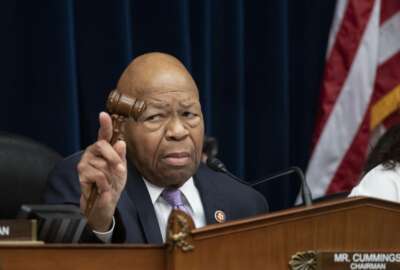
Top feds face 2020 take home pay cut
If your boss doesn't grin when folks speculate about the size of the 2020 federal pay raise, they have a good reason.
If your boss doesn’t grin when folks speculate about the size of the 2020 federal pay raise, they have a good reason.
Even if white collar government workers get a pay raise next year, thousands at the top of the career civil service ladder, in dozens of major high-wage cities, will actually see their take-home pay drop in 2020 because of a pay freeze for top feds even as health insurance premiums for most federal workers and retirees will be going up in January. Some by a lot!
While pay for rank-and-file civil servants, which is most feds, is expected to increase next year if those at the Grade 15 level are capped at $166,500. Many have been there for years and can’t get an increase until the cap is lifted for executives above them. The pay raise for rank and file workers will be either 2.6% — the amount proposed by the White House and a Senate committee — or 3.1% as previously approved by the House. A long-shot raise of 3.6% proposed by pro-fed House Democrats and federal unions is possible, but not likely.
The pay “cap” has long been a problem for GS-15 workers in New York City, Philadelphia, Washington D.C.-Baltimore and other high-wage areas where salaries are linked to local private sector wages for similar jobs. But workers at the top of their grade are all capped at $166,500 and can’t get an increase until the cap for executives above them is raised.
When or if the 2020 pay raise kicks in, many more in lower pay steps will join them. Premiums for the federal health program (FEHBP) are expected to jump next year but because of a cap on federal salaries, many employees at the top steps of Grade 15 can’t get a raise until the cap is raised for executives above them.
For several years now, salaries of thousands of workers across the country at the top steps of GS-15 have their pay capped at $166,500. Until executive level pay is increased that cap will remain. And there is no plan, for now, to raise that cap. The problem for those at the top is that their health insurance premiums, like those of other federal and postal workers, are going up in 2020. The new higher premiums will be announced next month. Net result: higher premiums/no pay raise/reduced take-home pay. They’ll actually make less next year then they are getting now.
In addition to workers already capped at $166,500 , hundreds — maybe even thousands more — of people at lower steps of the GS-15 ladder will also be capped next year. Each of the 15 General Schedule grades have ten longevity pay steps. In the Washington-Baltimore region, the $166,500 pay cap currently includes steps 8, 9 and 10. After the next pay raise it will cap salaries of workers at lower steps of their grade. Thanks to locality pay differentials, the pay cap, which now covers steps 5 through 10 of GS-15 will move further down, meaning even more employees won’t get a raise. The GS-15 pay cap now applies to workers in GS-15 steps 7 through 10. That is also true for workers in the metro-Houston locality pay zone.
The $166,500 pay cap now applies to the two top steps of GS-15 in Philadelphia-Camden. In Detroit, Warren, and Ann Arbor, feds are capped and will get no raise in steps 8, 9 or 10. Chicago feds in the top three steps of GS-15 are also already capped, many in lower steps will move up against the cap and get zero or reduced raises because of it.
The amount of the 2020 cost of living adjustment for federal-military-Social Security retirees won’t be known until next month. Unlike pay raises, which are a fiscal/political decision, COLAs are automatic and designed to keep those retirees up with inflation as measured by the Consumer Price Index.
Nearly Useless Factoid
By Alazar Moges
The Summer season has passed, and for many of us not lucky enough to live in areas where it’s warm year round, it will soon be time to start layering up before going outdoors. But how many layers is too many? 260 sure seems like a lot. Not for Canadian native Ted Hastings, who early this year set the world record for most shirts worn at once to raise money for a school playground. Ted wore shirts ranging in size from medium up to 20X to break the previous record.
Sources: Guinness
Copyright © 2025 Federal News Network. All rights reserved. This website is not intended for users located within the European Economic Area.
Mike Causey is senior correspondent for Federal News Network and writes his daily Federal Report column on federal employees’ pay, benefits and retirement.
Follow @mcauseyWFED





